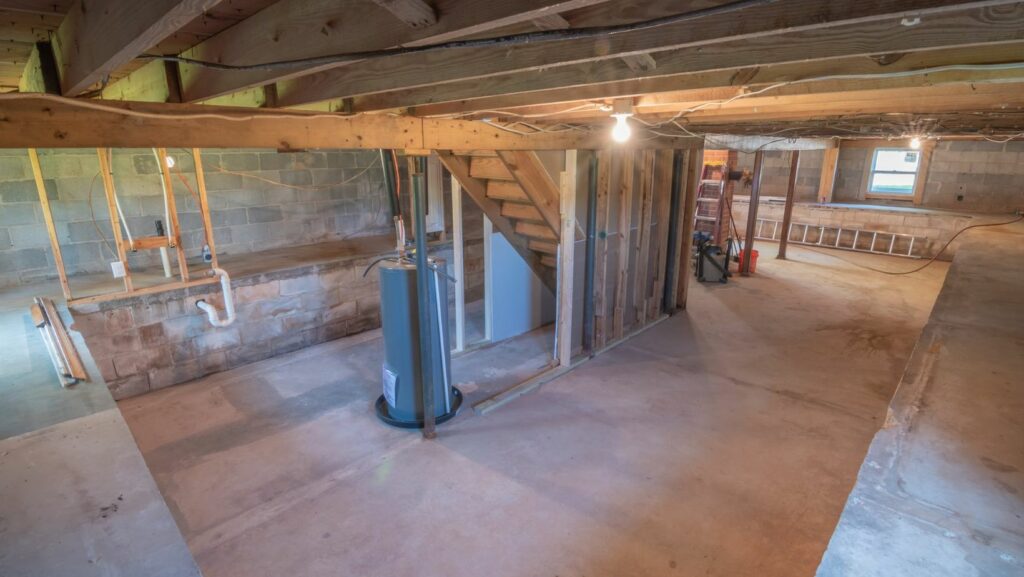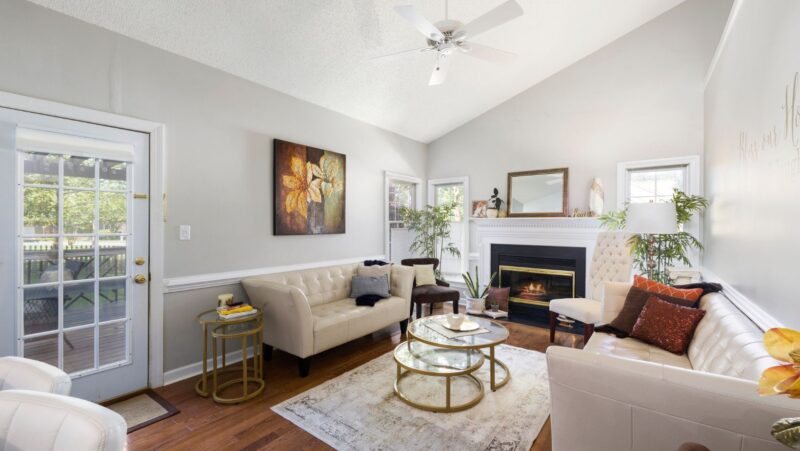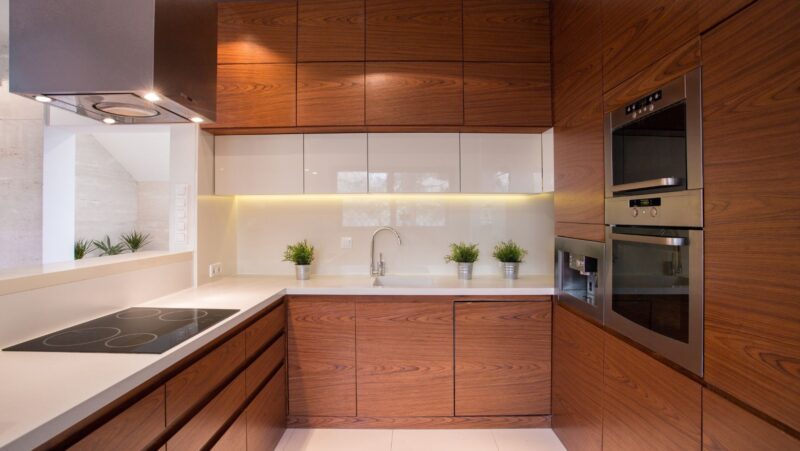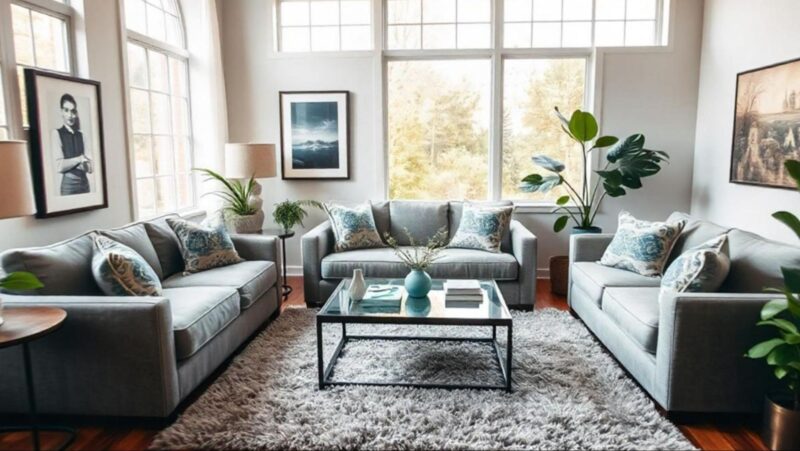
If you’re thinking about what to do with your basement, don’t just think of it as a space you store extra stuff. It’s not just a storage unit anymore. You can turn it into something that adds value to your home and makes things more comfortable for you and your family. And all it takes is some creativity and hard work on your part.
Understanding the Market Trends
Understanding the market trends is essential to maximizing value. For example, Forbes says the San Diego market looks quite good in 2023. Some feel that it is giving mixed signals. The average selling price of homes in the San Diego metro area increased by around 26.4% from June 2020 to June 2021. Then, it again increased by 11.7% from June 2021 to June 2022, when the average selling price reached $860,000.
The housing market is cyclical and changes regularly. Let’s consider the same San Diego example. According to Peak Builders & Roofers of San Diego, the local housing market is changing rapidly. The need and demand for larger houses with additional spaces is ever increasing. Hence, home additions have become a go-to option for homeowners.
However, there are some things you can do to help ensure that your home’s value doesn’t fall behind. Here are some reasons why people are transforming their basements for value additions.
- Multipurpose spaces: Homebuyers are increasingly interested in versatile spaces. Transforming your basement into a multipurpose room serving as a home office, gym, or entertainment area can appeal to various buyers.
- Energy efficiency: Incorporating energy-efficient features in your basement renovation can add significant value. This includes proper insulation, energy-efficient lighting, and possibly even energy-efficient appliances if you add a kitchen or bathroom.
- Smart home technology: Integrating smart home technology is a trend that has been growing. Consider adding features like smart lighting, thermostats, or even a home automation system to control various aspects of the basement.
- Additional living space: Creating a livable and comfortable space in the basement can add significant value. This could involve adding a bedroom, bathroom, and a cozy living area. Finished basements are often seen as an extension of the overall living space in a home.
- Home entertainment spaces: With the rise of streaming services, creating a dedicated home theater or gaming room in the basement can be a strong selling point.
Assessing Your Basement’s Potential
Before deciding what to do with your basement, you must assess its current state. If you don’t have the time or inclination for an exhaustive inspection, here are some things to help identify potential problems:
- Is it sound and stable? Your first step should be checking the foundation, flooring, and walls for cracks or leaks. If there are any moisture problems in these areas, they’ll need immediate attention before further work is done on the space. Also, check out electrical wiring. If there’s any doubt about whether it’s up-to-code or safe enough for use, call professionals for help.
- Moisture and waterproofing: Check for signs of dampness or moisture. Waterproofing the basement is essential to prevent mold growth and water damage. Consider installing a sump pump, sealing cracks, and improving drainage around the foundation.
- Ceiling height: Measure the ceiling height to determine if it meets local building codes and is suitable for your intended use. Some building codes require a minimum ceiling height for living spaces.
- Ventilation and air quality: Assess ventilation to ensure proper air circulation. Basements can be prone to poor air quality, so consider installing vents, fans, or an HVAC system to improve air circulation.
- Legal requirements: Check local building codes and regulations to understand what is allowed in your area. Some basements may have restrictions on their use or require specific safety measures.
- Natural light: Evaluate the natural light available in the basement. Consider adding windows or light wells to bring in more natural light. Adequate lighting can significantly impact the usability and comfort of the space.
- Plumbing and electrical considerations: Determine the location of existing plumbing and electrical systems. Consider the cost and feasibility of adding or relocating these systems based on your plans for the space.
If your basement shows potential and your area’s housing market is in demand, you can start with the transformation for additional home value. Consider hiring local experts for your project. This will ensure that the service provider knows all the local construction codes. Moreover, it will be easier for you to communicate face-to-face with them.
So, suppose you are living in San Diego. In that case, it is best to connect with experts in home additions in San Diego. They will know how to transform your basement for the most additional space and value. Consider any additional services that the company offers, like painting, flooring installation, window replacement, etc.
Designing Your Subterranean Retreat
Once you find and hire the right home addition and remodeling services provider, it is time to work together to design your basement.
- Designing your subterranean retreat is similar to designing an entire home. You’ll want it to be comfortable and functional, aesthetically pleasing, safe and secure, easy to maintain; the list goes on.
- Start by identifying what you want regarding function: Do you want a place where everyone can gather together? A room where kids can play video games while their parents watch TV? Maybe even a home office where Dad can work on his laptop while he watches sports after work? All these scenarios require different kinds of lighting.
- Whether or not natural light comes through windows will affect how much artificial light needs to be added throughout the space. This will affect the utility bills based on how much electricity lights use overall.
Budget-Friendly Basement Renovations
You may be excited about the prospect of turning your basement into a space that can be used for entertaining, relaxing, and sleeping. However, it’s important to remember that renovations aren’t cheap. You’ll want to set aside a budget for all aspects of the project: materials, labor, and any extras.
Before starting renovations for your home’s basement, you must consider how much money you have. You can start by doing market research to find out average renovation costs. For instance, a Manta study shows that renovation costs are between $11,734 and $93,872 in San Diego. It includes labor costs, materials, equipment, and miscellaneous project costs.
Knowing such things will give you a basic idea of how to set your budget. When setting a budget, Identify the main purpose of your basement to guide your renovation decisions. Ensure your basement is waterproofed to prevent future issues. Seal any cracks in the walls and floors, and consider using waterproof paint or coatings.
Undertake some do-it-yourself (DIY) projects to save on labor costs. Painting, installing flooring, and simple carpentry work are often manageable for DIY enthusiasts. Opt for budget-friendly flooring options like laminate, vinyl, or carpet tiles. These are often more affordable than hardwood or high-end tiles.
The Technical Side: Lighting, Ventilation, and Waterproofing
While there are some projects you can DIY, there are some that require professional help. It is best to hire professionals for technical aspects like lighting, ventilation, and waterproofing.
- Lighting: The best way to go about lighting is by using LED lights. They are more efficient than traditional bulbs, and they last longer, too. Also, make sure you get the right wattage. You don’t want too much or too little light in your basement. It will make all the difference in how comfortable you feel living there.
- Ventilation: The ventilation system should be installed first to help regulate temperature throughout your home. If there’s no ventilation system installed yet, consider getting one before winter comes along, and things start heating up there.
- Waterproofing: This is important for any basement remodel because water seeps through cracks in walls or floors if not properly sealed. Ensure that all leaks have been patched up and that any insulation has been properly sealed. According to Basement Defender, around 98% of basements in the US will face some form of water damage in their lifespan. It can affect the home, both structurally and aesthetically. Waterproofing can prevent this.
Permits and Regulations
Another crucial step to consider when creating a subterranean sanctuary is to make sure that you comply with local regulations and building codes. If you don’t know what permits are required for your project, it’s best to research this information before moving forward. The best place to start is by contacting your area’s local planning department or zoning commission.
Once you know what kind of permits you’ll need, the next step is applying for them. You can also seek help from your local service provider to understand the codes and permits.
Additionally, you will want to set aside some budget for permits, too. According to HomeGuide, permit costs are around $500 to $2,000. These costs cover construction, bathroom or kitchen remodeling, basement renovations, and room additions, to name a few.

To summarize, your basement can become a home value haven with the right vision, planning, and execution. The key is to take your time and do it right. Suppose you’re looking to sell your home soon. In that case, renovating for increasing home value might be an ideal investment. Similarly, if you plan on staying, transforming the basement to create beautiful memories is certainly worth it.













